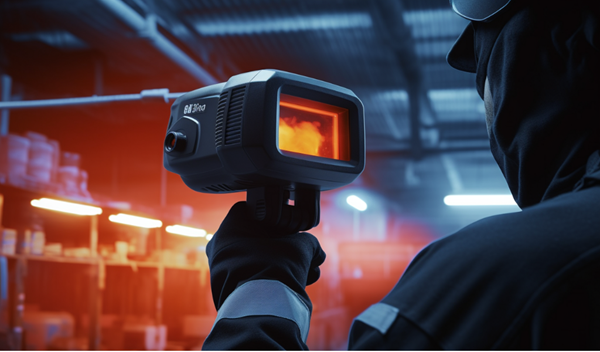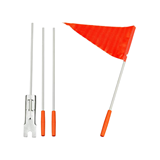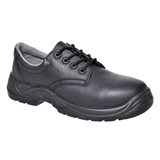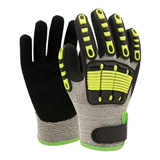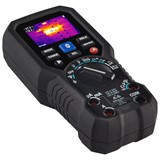Thermal imaging cameras have become indispensable tools across various industries, offering valuable insights into temperature variations and identifying potential issues in machinery, electrical systems, and even in medical diagnostics. However, the growing utilization of these cameras also raises concerns about safety and compliance.
One primary safety consideration is the potential exposure to electromagnetic radiation. While modern thermal cameras are generally safe for human exposure, prolonged exposure to high-intensity thermal radiation should be avoided. Manufacturers often specify the safe operating distances and durations for their devices, and users must strictly adhere to these guidelines to prevent any adverse effects on human health.
Additionally, compliance with industry standards and regulations is crucial to ensure the accuracy and reliability of thermal imaging measurements. Calibrating the cameras regularly and following recommended maintenance protocols are essential to maintain their performance within acceptable tolerances. Furthermore, adhering to relevant safety standards like ISO 9001 and ISO 14001 ensures that thermal imaging processes are conducted with utmost precision and environmental consciousness.
In some sectors, like medical applications, adherence to specific protocols and guidelines is vital. Infrared cameras used in medical thermography must comply with medical device regulations to guarantee accurate temperature readings and safe diagnosis for patients.
Ensuring Safe Operation and Usage of Thermal Imaging Cameras
Thermal imaging cameras are powerful tools widely used in various industries, including firefighting, electrical inspections, and security. To ensure safe operation and usage, it is crucial to follow these guidelines:
- Proper Handling: Always handle the thermal imaging camera with care and adhere to the manufacturer's instructions.
- Environmental Considerations: Be aware of the operating conditions and limitations of the camera. Extreme temperatures, humidity, and dust can affect its performance.
- Regular Maintenance: Conduct routine maintenance checks to ensure the camera is in optimal working condition.
- Battery Safety: Use approved batteries and chargers to avoid accidents or damage.
- Proper Training: Ensure that operators receive proper training on how to use the thermal imaging camera correctly and safely.
Thermal imaging cameras are designed to detect and visualize heat, making them invaluable in a wide range of applications. From spotting electrical faults to identifying overheating machinery, their uses are diverse and critical in ensuring safety and compliance in various industries.
Proper Training and Certification for Thermal Camera Operators
To utilize thermal imaging cameras effectively and safely, operators should undergo proper training and certification. This includes:
- Understanding Camera Features: Training should cover all aspects of the camera's features and functionalities.
- Interpreting Thermal Images: Operators must learn how to interpret thermal images accurately.
- Safety Protocols: Training should emphasize safety protocols and guidelines during various applications.
- Certification: Operators should obtain relevant certifications to demonstrate their competence in operating thermal cameras.
- Continuous Learning: Encourage operators to engage in continuous learning to stay updated with the latest advancements in thermal imaging technology.
By ensuring that operators are well-trained and certified, businesses can maximize the benefits of thermal imaging cameras while minimizing risks and accidents.
Understanding the Limitations of Thermal Imaging Technology in Thermal Imaging Cameras
While thermal imaging technology is highly valuable, it has certain limitations that operators should be aware of:
- Temperature Range: Thermal cameras have specific temperature ranges they can measure accurately, and extreme temperatures can lead to inaccuracies.
- Transparency: Thermal cameras cannot see through certain materials like glass or plastic, which may affect their applications.
- Reflective Surfaces: Reflective surfaces can distort thermal images and affect the accuracy of temperature readings.
- Resolution: Lower-resolution cameras may not provide detailed images, impacting their usability in certain scenarios.
- Limited Visibility: Thermal imaging cameras may not provide clear images in extreme weather conditions, such as heavy rain or fog.
- Moving Objects: Fast-moving objects may appear blurry or indistinguishable in thermal images.
Complying with Privacy and Data Protection Regulations for Thermal Imaging Cameras
Privacy and data protection are paramount when using thermal imaging cameras, especially in public or sensitive areas:
- Informed Consent: Obtain proper consent from individuals before capturing their thermal images.
- Data Storage: Implement secure data storage protocols to prevent unauthorized access.
- Anonymization: Ensure that captured thermal images are properly anonymized to protect individuals' identities.
- Data Retention: Establish clear policies on data retention and deletion to comply with relevant regulations
- Legitimate Use: Use thermal imaging cameras for legitimate purposes and avoid any form of misuse or unauthorized monitoring.
- Transparency: Be transparent about the use of thermal imaging cameras and inform individuals about the purpose of data collection.
Addressing Safety Hazards in Hazardous Environments using Thermal Imaging Cameras
Thermal imaging cameras are invaluable for identifying hazards in hazardous environments, and operators should follow these safety guidelines:
- Personal Protective Equipment (PPE): Wear appropriate PPE to protect against potential hazards.
- Distance: Maintain a safe distance when inspecting dangerous or volatile areas.
- Training for Specific Environments: Operators must receive specialized training for hazardous environments.
- Emergency Preparedness: Have emergency procedures in place in case of accidents or incidents.
- Collaborative Approach: Encourage collaboration between thermal camera operators and safety personnel to address potential hazards effectively.
Periodic Testing and Calibration for Accurate Thermal Measurements in Thermal Imaging Cameras
Regular testing and calibration are essential to ensure the accuracy of thermal measurements:
- Calibration Frequency: Follow the manufacturer's recommended calibration schedule.
- Calibration Standards: Use certified calibration standards to maintain accuracy.
- Test Under Different Conditions: Perform tests under various environmental conditions to verify accuracy.
- Records Keeping: Maintain detailed records of calibration and testing for reference and compliance.
- Calibration Maintenance: Regularly check the calibration status and conduct recalibration when necessary.
Safeguarding Sensitive Thermal Imaging Data in Thermal Imaging Cameras
Sensitive thermal imaging data should be handled with utmost care to prevent unauthorized access or misuse:
- Encryption: Utilize strong encryption methods to secure stored thermal imaging data.
- Access Control: Implement access control mechanisms to restrict data access to authorized personnel only.
- Network Security: Ensure that data transmission over networks is secure and encrypted.
- Data Disposal: Establish secure data disposal procedures to erase sensitive data when it's no longer needed.
- Data Access Logs: Keep detailed logs of data access to monitor and track any potential breaches.
FAQs (Frequently Asked Questions)
1. Can thermal imaging cameras detect all hazards?
Thermal cameras can identify many hazards, but they have limitations, such as seeing through specific materials or detecting certain types of hazards.
2. Are thermal imaging cameras safe to use in explosive environments?
Some thermal cameras are designed to be intrinsically safe for use in explosive environments, but operators must follow safety guidelines and use approved equipment.
3. Do thermal cameras work in complete darkness?
Yes, thermal cameras do not rely on visible light and can capture thermal images even in complete darkness.
4. Can thermal imaging cameras see through walls?
No, thermal cameras cannot see through walls. They detect and visualize surface temperatures, not objects behind barriers.
5. Are thermal imaging cameras useful for medical applications?
Yes, thermal cameras have medical applications, such as identifying temperature anomalies in the body, which can indicate health issues.
6. Do thermal cameras capture personal data?
Thermal cameras capture thermal images that may contain personal data, making privacy protection crucial.
7. Can thermal cameras detect concealed weapons?
While thermal cameras can detect objects with temperature differences, they are not specifically designed for weapon detection.
8. Are thermal imaging cameras expensive to maintain?
The cost of maintenance varies depending on the camera type and usage, but regular maintenance is essential to ensure accurate results.
9. Can thermal cameras be used for wildlife observation?
Yes, thermal cameras are commonly used for wildlife observation, tracking, and conservation efforts.
10. Are there any health risks associated with thermal imaging cameras?
Thermal cameras are generally safe to use, but operators should avoid exposing the camera's lens to intense heat sources to prevent damage.
11. Can thermal imaging cameras be used for building inspections?
Yes, thermal imaging cameras are commonly used for building inspections to identify issues like water leaks, insulation problems, and electrical faults.
12. Can thermal cameras be used for firefighting?
Yes, thermal imaging cameras play a crucial role in firefighting by helping firefighters locate hot spots and identify potential hazards.
13. Can thermal cameras detect gas leaks?
Yes, thermal imaging cameras can detect gas leaks by visualizing temperature differences caused by escaping gases.
14. Can thermal cameras be used for security purposes?
Yes, thermal imaging cameras are used for security to monitor and detect intrusions, especially in low-light or nighttime conditions.
15. Can thermal cameras identify energy inefficiencies in buildings?
Yes, thermal cameras can identify energy inefficiencies in buildings by pinpointing areas of heat loss or excessive heat gain.
16. Are thermal cameras affected by weather conditions?
While certain extreme weather conditions like heavy rain or fog may affect thermal camera performance, they are generally resilient to most weather conditions.
17. Can thermal cameras be used for predictive maintenance?
Yes, thermal cameras are commonly used for predictive maintenance in industries to identify potential equipment failures before they occur.
18. Do thermal cameras have a maximum detection range?
Yes, thermal cameras have a maximum detection range, beyond which they may not provide accurate readings.
19. Can thermal cameras detect water leaks in roofs?
Yes, thermal cameras can detect water leaks in roofs by visualizing temperature anomalies caused by moisture.
20. Are thermal cameras suitable for search and rescue operations?
Yes, thermal cameras are valuable tools in search and rescue operations, especially in locating missing persons in low-visibility conditions.

